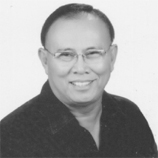 LAST Friday. February 12, when we wrote our Cebuano column in this paper, we said that as of that time we did not hear any other simulation exercise conducted in Davao City regarding the implementation of the mass vaccination program.
LAST Friday. February 12, when we wrote our Cebuano column in this paper, we said that as of that time we did not hear any other simulation exercise conducted in Davao City regarding the implementation of the mass vaccination program.
What we were aware of then was only the simulation activity that was conducted to determine the travel time of transporting the vaccines from the airport to the storage facility at the Southern Philippines Medical Center (SPMC) in Bajada.
But we were wrong because on that Friday, February 12, the vaccination group was doing a simulation exercise in transporting (supposedly) the vaccines from SPMC storage to Mabini Elementary School in Bangkal which has been identified as a major vaccination center in the city.
We were extremely elated with the development because finally, those who have been monitoring the actions of the city to stave off the CoViD infection will know exactly where to go to take the shots.
At the same time, we are also made aware that the city is now eyeing the University of Mindanao Guinga in Tugbok, and the University of the Southeastern Philippines as other vaccination centers. But wait, are the identified potential hubs for front liners only who are to be inoculated first? Or, will these hubs be for the entire population of the city?
We are asking these questions because we know the bulk of the city’s population are located in the suburban and rural areas. Which would mean that if the just identified vaccination hubs are for the whole population of this very large city, then it would mean that the massive immunization program of the government against CoViD 19 is bound to fail. And why are we saying this?
Simple. Yes, it would be easier and faster for government to transport the vaccines to the identified centers including the people who will administer the vaccination. But what about those people who want to get vaccinated? We must remember that they are in far-flung areas.
While Davao City may now have better roads leading to the uplands and in farming communities, it still cannot be denied that there is still a lack of public transportation plying the routes leading to the areas concerned.
Moreover, where such transport facilities are available under the present protocols public transportation is still prohibited to carry passengers in excess of what is allowed by the Inter-Agency Task Force on Emerging Infectious Diseases (IATF).
Hence, travel time and availability of transportation could hinder the coming of people wanting to get vaccinated to the centers that are located mostly in the downtown or peripheral areas. And if this situation prevails, then the prospective recipients of the vaccine arriving may not be commensurate to the total number of vials brought per list.
Of course, per the prescription of the Department of Health, there has to have a listing of replacements in case those pre-listed do not arrive on time. But what is the lead time given for the waiting when the vaccinators can declare that those pre-listed are not arriving and those in the substitute list may now be called?
So, as far as we are concerned we believe that it is very important that this early (or late) the authorities should now identify the other areas to be designated vaccination centers, especially those in the rural areas. In this way, travel time for the vaccinees will be estimated and the availability of public transport be planned out properly.
Any failure in planning along this aspect by our authorities in the city could be extremely disadvantageous to the population and to the city itself. We must not forget that it is the city, which is footing the cost of the vaccines. Should its effectiveness be compromised because of late or non-arrival of the intended recipients then the whole exercise will be a futile one.
************************
We have it from television reports that the task force on the massive vaccination in Davao City will be holding a series of webinars on the processes and on the vaccines themselves before rolling out the massive vaccination program.
We assume that this is part of what the city government has been saying about massive information, education, and communication drive that it will launch to drum up support and improved confidence of the people on the vaccination as well as on the vaccines.
According to reports the speakers will be experts in their health fields and will be coming from different agencies involved in the fight against the coronavirus disease.
While we believe this strategy is a very laudable move by the city, we think that there should be other vehicles to carry the IEC drive so that more and more people will be made aware of the program. After all, webinars would require participants to have the necessary gadgets to get to participate or interact or just even listen to the speakers.
And how many out of every one hundred of the city’s population are in possession of the gadgets? And how many barangays in the city are still off the coverage of signals of telecommunication companies? Some are even still without electricity!
Why not the city organize some face-to-face seminars subject to the restrictions mandated by established health protocols that must be strictly implemented among participants? This way more people will be reached and made aware of their responsibilities in the massive vaccination program.
If the government is now bent on allowing the operation of many economic activities in MGCQ or even in GCQ areas, why cannot it allow the holding of face-to-face seminars on educating the people on the vaccines and the mass vaccination program? It is to their advantage, is not it?
